From left: Patrick Spijker (Enschede council), Jeroen van Ingen (Things Network Twente), John Klaver (VRM), Rient Heerink (UT), Anne Dijkstra (UT) and Maya van den Berg (UT). Timothy Sealy (Things Network Twente/Saxion) is not present in this photo.
A new approach to groundwater issues is about to take off in Enschede: residents will monitor their own groundwater levels. It is part of the Citizen Science pilot Grondwater peilen (Monitoring groundwater levels), coordinated by University of Twente DesignLab. The first monitoring wells were put in place at 11 households at the end of October 2018. The pilot was completed in April 2019: read about the project on this page.
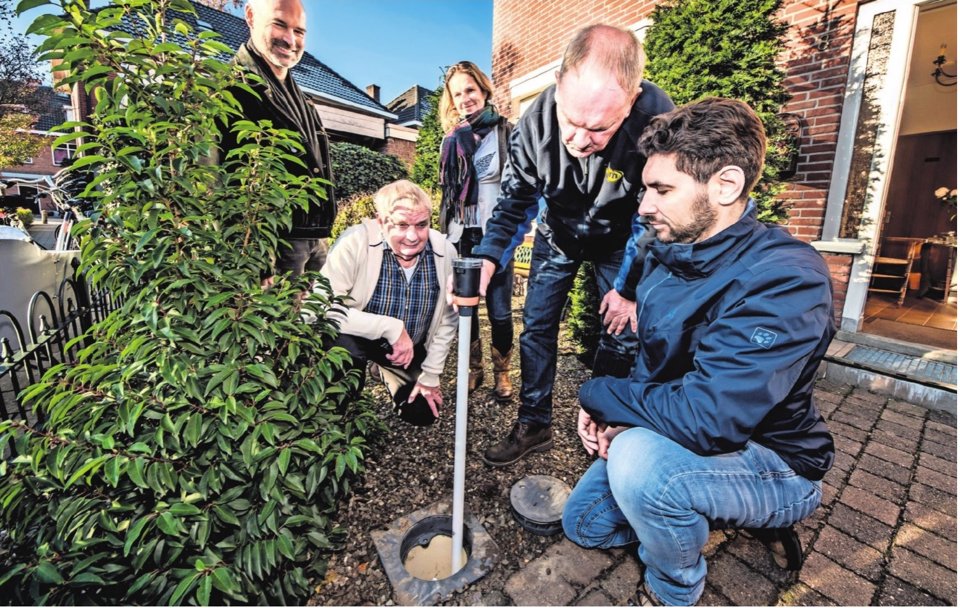
What's the reason for this project?
Enschede has had to contend with high groundwater levels for some time. At the same time, there are reports of wet cellars from various locations across the city. Even now, the link between the two is not entirely clear, and solutions have been lacking. With this new project, smart sensors in the monitoring wells communicate via the Internet of Things to provide immediate insight into groundwater levels for the relevant locations in Enschede.
Participants can view the water levels on their smartphones and tablets, and there are three meetings where they can exchange experiences with one another and the project partners. A public conclusion is planned for the first part of 2019, to engage other interested parties in the project results.
Project partners
University of Twente, Enschede local authority, Saxion University of Applied Sciences, VRM Levellog, Things Network Twente, and Twente47. DesignLab (part of University of Twente) will coordinate. Financial backing is partly secured by Twente47.
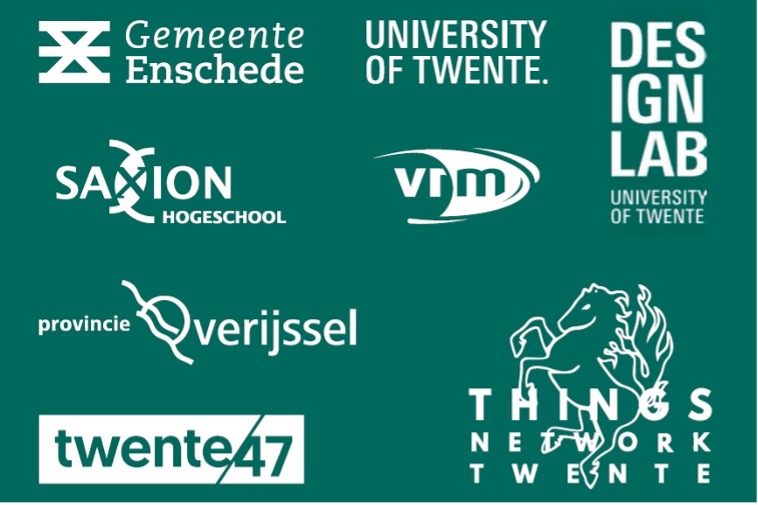
Updates
15 April 2019 | A look back at completion of the Monitoring groundwater levels together pilot 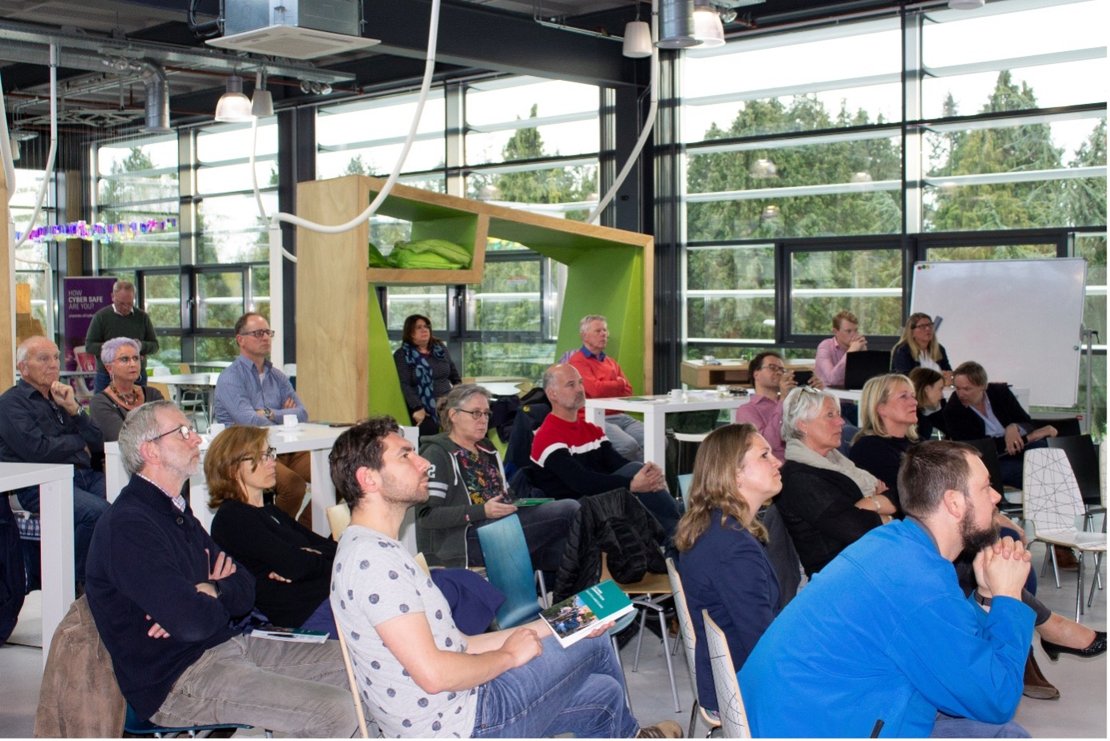
On April 11th, project partners and participating residents together concluded the pilot phase with a meeting at DesignLab. Those attending received a book outlining the pilot highlights & recommendations. Short talks by the project partners and residents illustrated the technical implementation, participants’ perspectives, and the results of the research.
The pilot saw an existing groundwater sensor (the Levellog) equipped with a proprietary communication module, so that monitoring data could be viewed by residents immediately. Jeroen van Ingen from Things Network Twente (TTN) explained that the development was a more time-consuming task than had been expected. At the same time, he was glad that all sensors were measuring properly now, and that TTN will continue to support the monitoring process. “If there is this much enthusiasm and interest, you have to do something with it,” added Robert Slager (Twente47).
Residents also made their views heard: participant Lisette Pruim has contended with groundwater for 20 years, and is glad she can now monitor the levels. Together with other ‘monitors’, she would like to continue monitoring and look for solutions.
research report
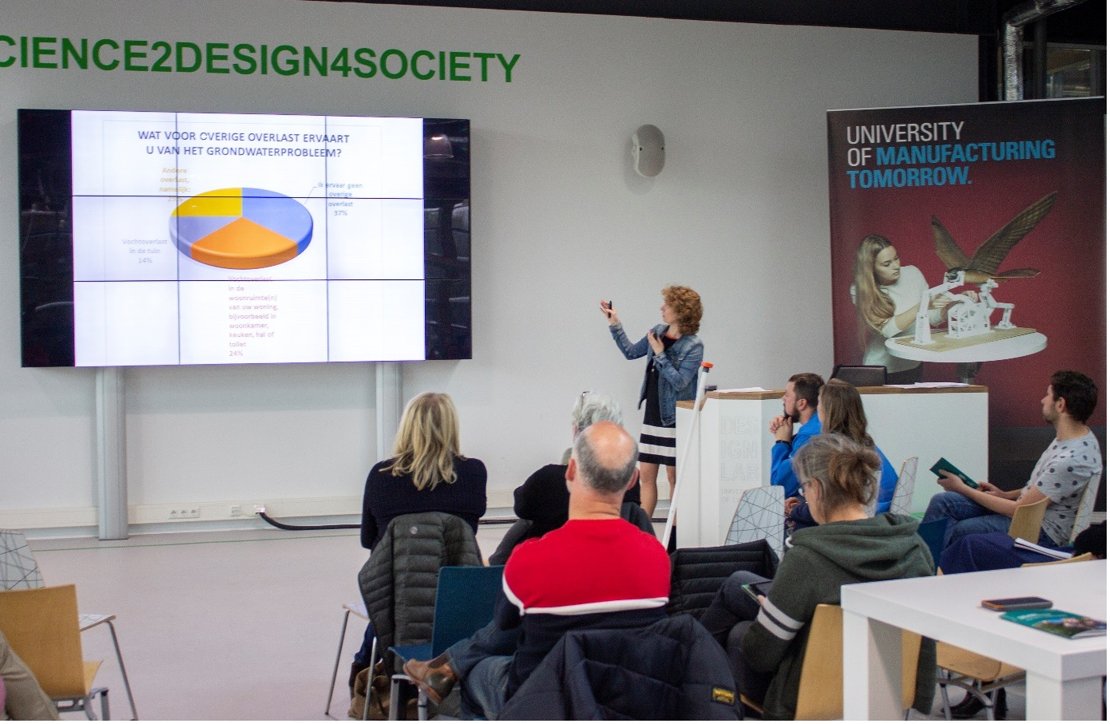
UT researcher Anne Dijkstra explained her research, on the foundation of support for self-monitoring in Enschede. In her report, she recommends continuing 1) the work on a community in which participants can exchange knowledge and experiences and 2) the search for an active role for all parties in order to take specific actions.
This final presentation concluded the pilot. DesignLab and the researchers look back on an exciting pilot, that received lots of interest from residents and the media. We wish TTN and VRM all the best with their follow-up, and we thank residents - and you, the reader - for your involvement!
2 April 2019 | Final presentation of ‘Monitoring groundwater levels together' 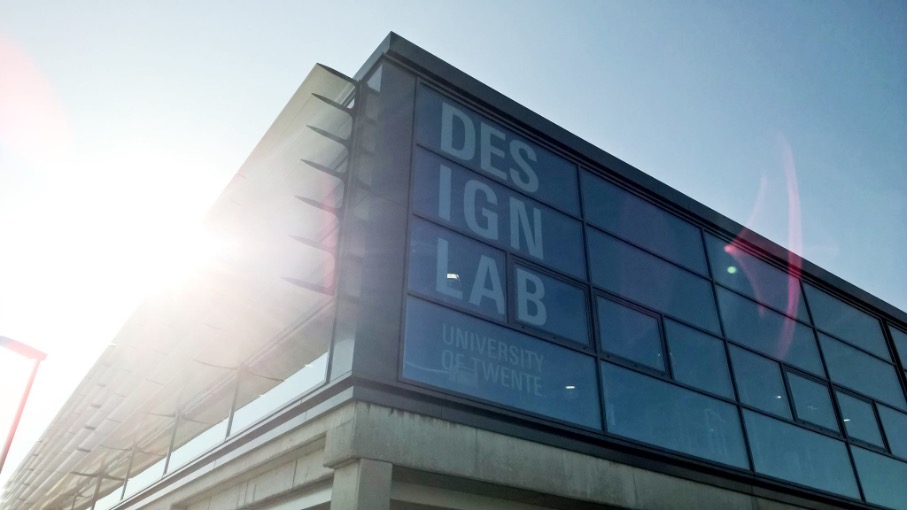
On Thursday 11 April 2019, the final presentation of the Monitoring groundwater levels together pilot will take place at University of Twente DesignLab.
The project team and participants will share the self-monitoring outcomes and their experiences. What’s more, those present will also receive a book outlining the pilot highlights and recommendations.
We cordially invite anyone who is interested to attend this meeting. There is no need to register.
meeting information
Date | Thursday 11 april 2019 |
Time | 5 - 6 PM |
Location | DesignLab University of Twente |
Route & parking | Follow the directions online.
Parking available at P3. |
We are looking forward to seeing you there!
8 February 2019 | Progress and continued monitoring Most of the participants are very involved in the monitoring process.
Data interpretation is not that easy for everyone. Timothy (Saxion and The Things Netwerk Twente) explains: “During the pilot, it turned out to be ore time-consuming than expected to get all the monitoring modules right, to achieve the desired battery life, and to correctly set up the monitoring dashboard through a web environment.”
The issues with the monitoring modules and battery are being looked into. The Things Network resolved the problem with viewing the data with the introduction of a new web environment.
Pilot Follow-up
In other words: lots to do, but the pilot is finishing soon. The research phase – which involved the University of Twente (DesignLab and researchers from the department of Communication Sciences) – will be concluded at the start of March. As such, the last residents’ meeting was mostly taken up by extra talk about the question ‘how do we proceed?’.
Firstly, participants can join the TTN Community. TTN intends to continue its support in developing and refining the software, and the interpretation of the monitoring data.
A second follow-up option is to ask students for help with further analyses. At Saxion, this would be engineering students, for example, who could examine the problems and possible solutions for each house. Some pilot participants stated they would like to help look into the project possibilities for students.
In any case, the participants would like to stay in touch with each other and exchange experiences. We agree that we will meet again in May 2019 as a project group and residents, to interpret the data gathered up to that point.
RESULTs
The research does not just involve the participants. The project group is currently also processing the results of a survey by the EnschedePanel. Around 1,000 Enschede residents completed a questionnaire about groundwater nuisance, and about the extent of self-monitoring being part of the solution.
The pilot group is gathering the pilot results - with method and results of the survey - into a book. This book will be available later this year on the Monitoring Groundwater Levels Together project page.
Monitoring groundwater levels together pilot final presentation: 11 April
15 January 2019 | Monitoring groundwater levels together What do we know about the groundwater in Enschede?
The second meeting for the pilot only saw two people absent - due to the flu.
Hydrologist Christiaan van der Tol talked about the groundwater in Enschede, and what is known about the subsoil, and how groundwater moves around. He also explained the advantages and disadvantages of drainage. Things became really interesting when he said he himself had to contend with high groundwater levels too. There were plenty of questions.
The first monitoring data
We also took a look at the first readings. The information from these first readings means something slightly differently for each location, because every situation is unique. Everyone needs somewhat different actions to be taken, and the monitoring data can help to determine the most effective course of action for each household.
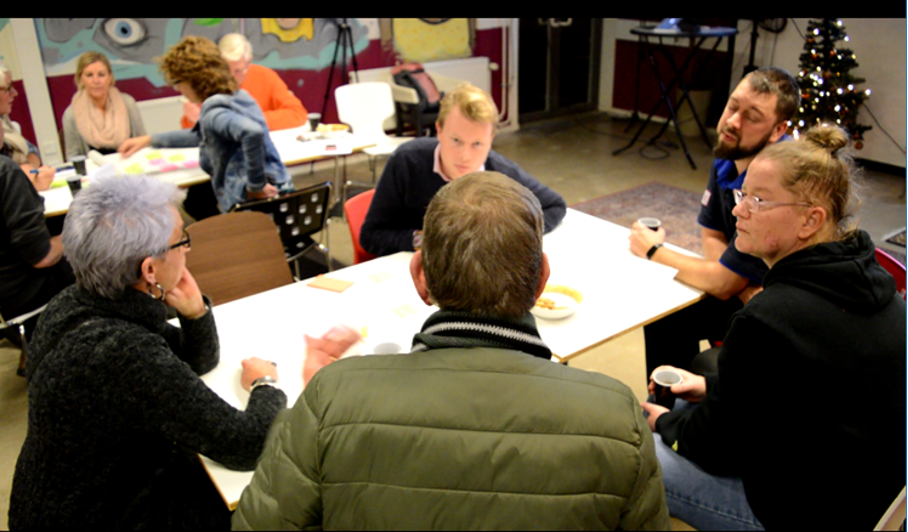
Explanation of project IoT application Many of you got in touch via e-mail to say you would like to find out more about the use of IoT within the project. Here it is!
As part of the pilot, we developed an IoT application that enabled residents in Enschede to monitor the groundwater levels themselves.
easy-to-use monitoring module
The IoT application consists of a Monitoring module in an existing VRM sensor plus a communication environment (website and app). This allows the resident easy insight into the data their sensor generates.
By making sure this communication environment is as easy to use as possible, and designing it in collaboration with the users, a valuable product is created which can be used for further development even after the project. By gaining insight into their own data, the user could - for example - find out how effective a water-repellent or indeed a water-storing remedy would be.
OPEN SOURCE
The Things Network Twente develops the IoT application. This is a group of active residents who monitor together, and want to make data available in an accessible manner. All this is to promote open innovation.
The developed applications are open source. The open network of The Things Network is used to send data (see image below (Dutch). An important motivation is to involve less technically-minded people in the readings too.
The pilot receives support from the Twente47 foundation, and is partly financed by the province of Overijssel.
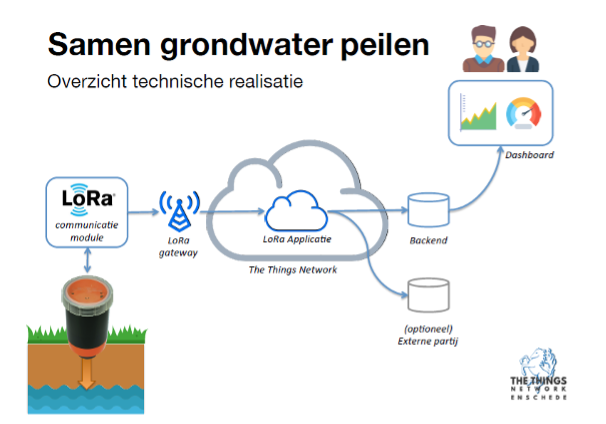
26 November 2018 | Plenty of attention for monitoring groundwater levels together The Citizen Science project ‘Monitoring groundwater levels together’ is well and truly in the (media) spotlights. RTV Oost, Tubantia, 1Enschede and Huis-aan-Huis Enschede already brought the project to the attention. Read, watch, and listen to the impressions of editors who were there when the first smart sensor was fitted:
o RTV Oost
o Tubantia
o 1Twente: Enschede
o Huis-aan-Huis Enschede
Huis aan huis Enschede, 14 November 2018 | Tubantia, 24 November 2018 |
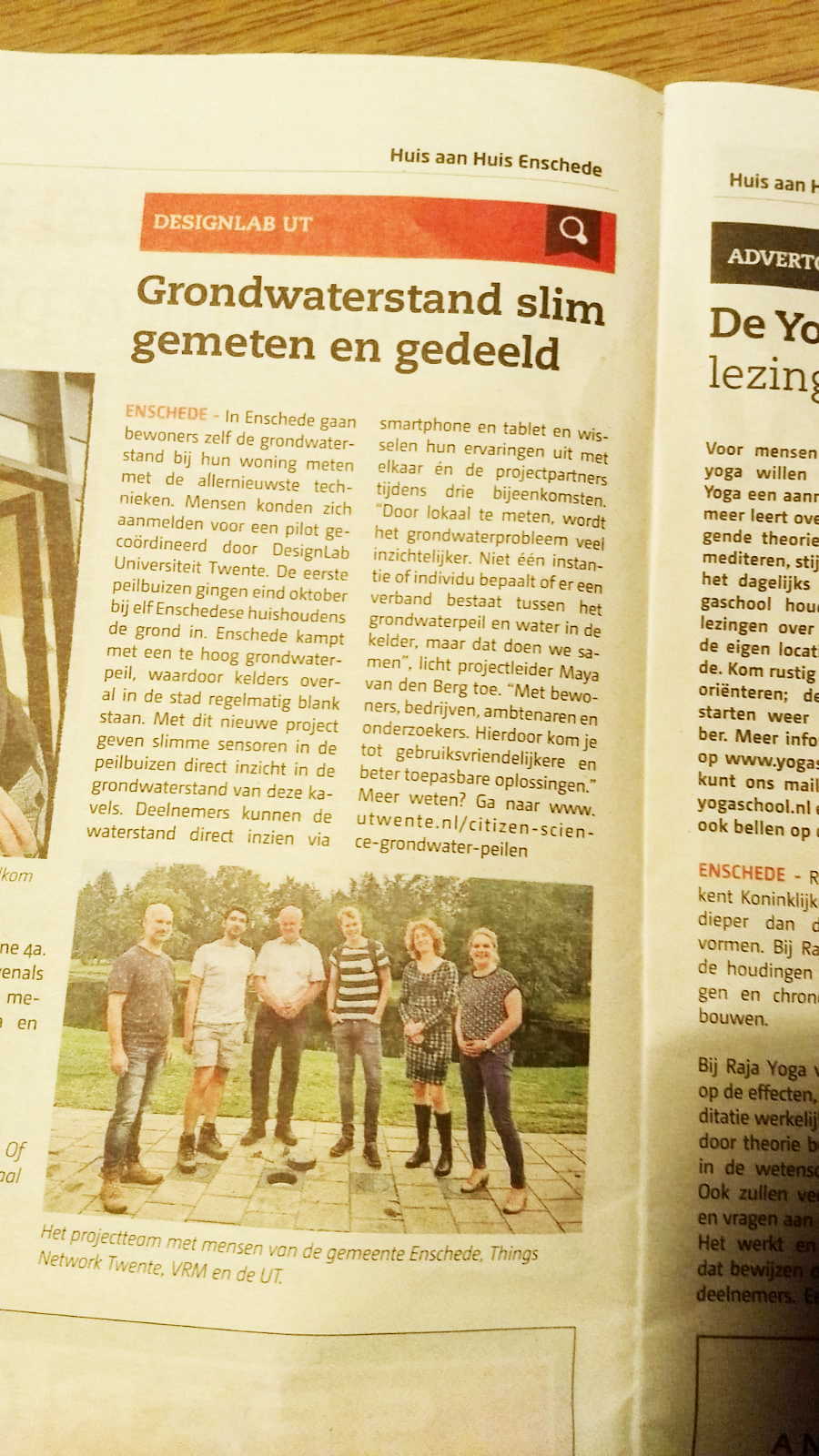
| 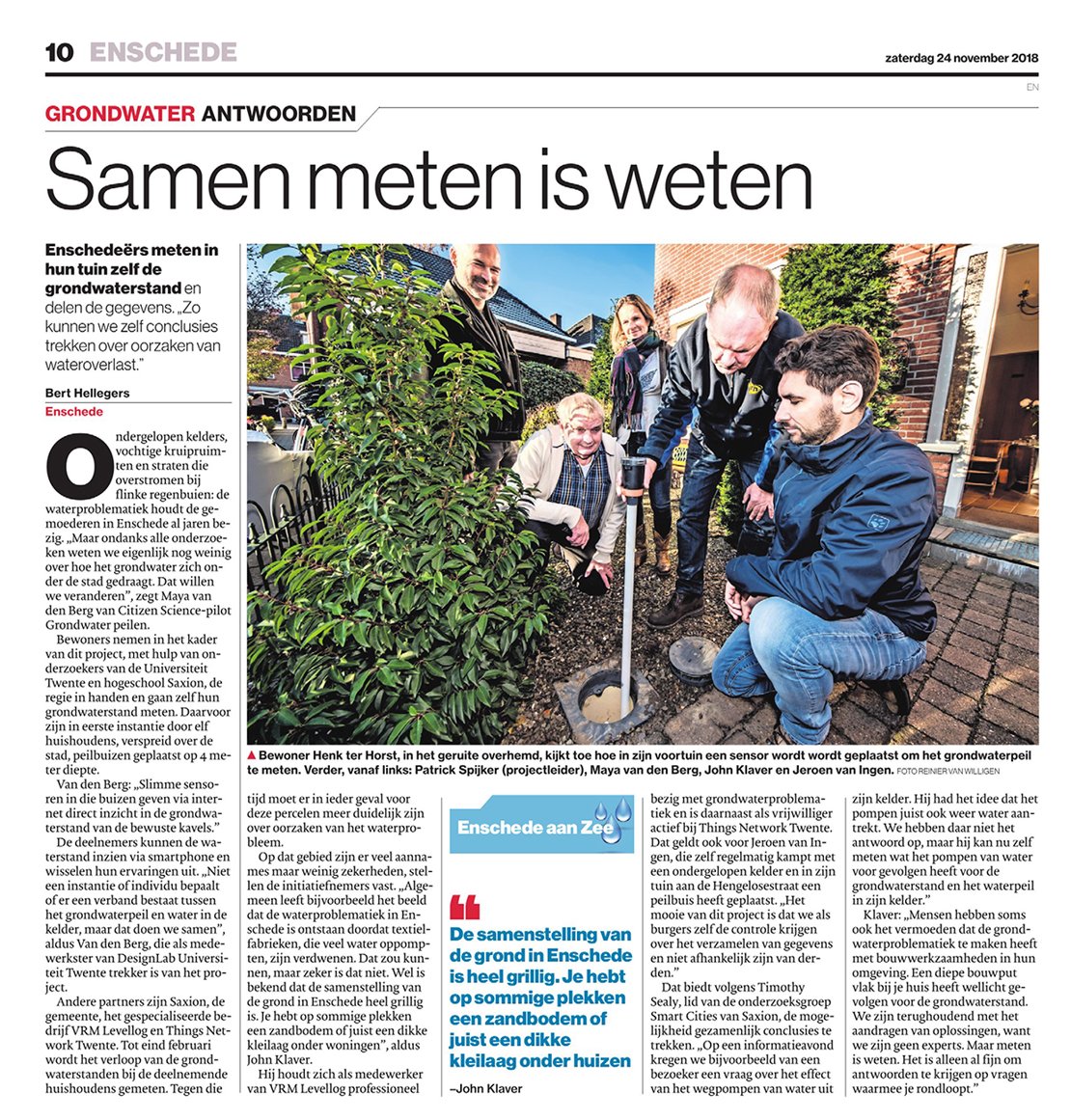
|
Tubantia online, 24 November 2018 |
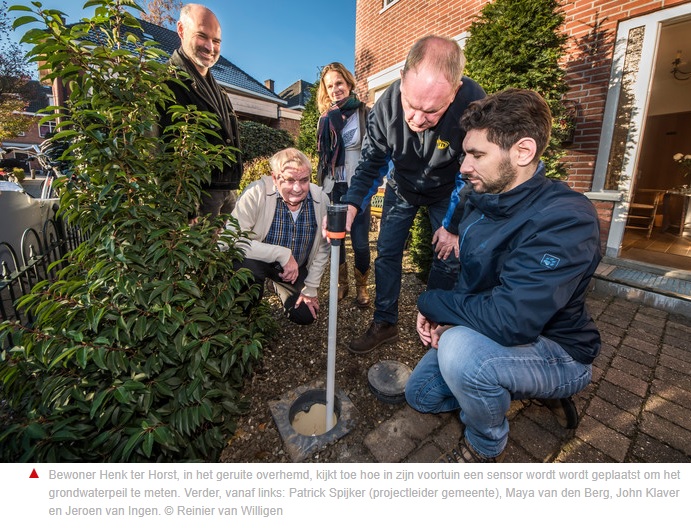
|
PILOT PROJECT FULL
Thanks to the press attention, various people from Enschede signed up to participate and/or to receive project updates. The pilot was fully subscribed, but we have a mailing list (and this project page) to keep anyone who is interested up to date.
PUBLIC FINALE EVENT
We are organising a public finale event to take place at University of Twente DesignLab at the start of 2019. Here, you will find out more about the project results, and we can have a dialogue about the follow-up.
Keep an eye on this page!
7 November 2018 | First press release issued 1 November 2018 | Kick-off with residents November 1st, participating residents and the project partners met at the CeeCee Community for a kick-off of the ‘Monitoring groundwater' in Enschede. More information will be available soon - check this page to stay up to date!
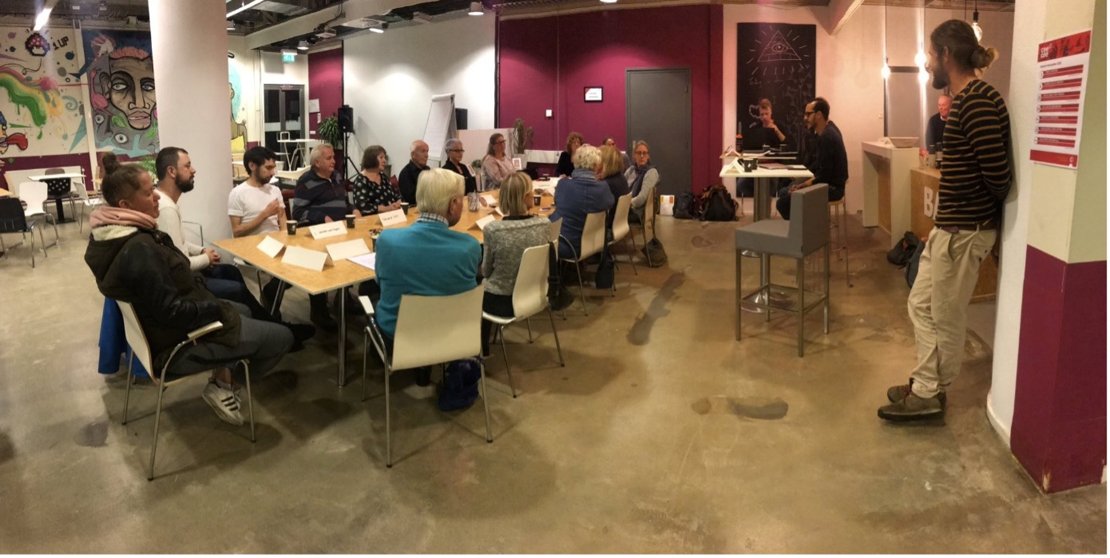
Downloads & links
More information?
Please contact Maya van der Berg, programme manager DesignLab University of Twente.
dr. M.M. van den Berg (Maya)
Program Manager











